May 21, 2024
As we sail into Budapest in the early morning hours, we get a small taste of the history that awaits us.
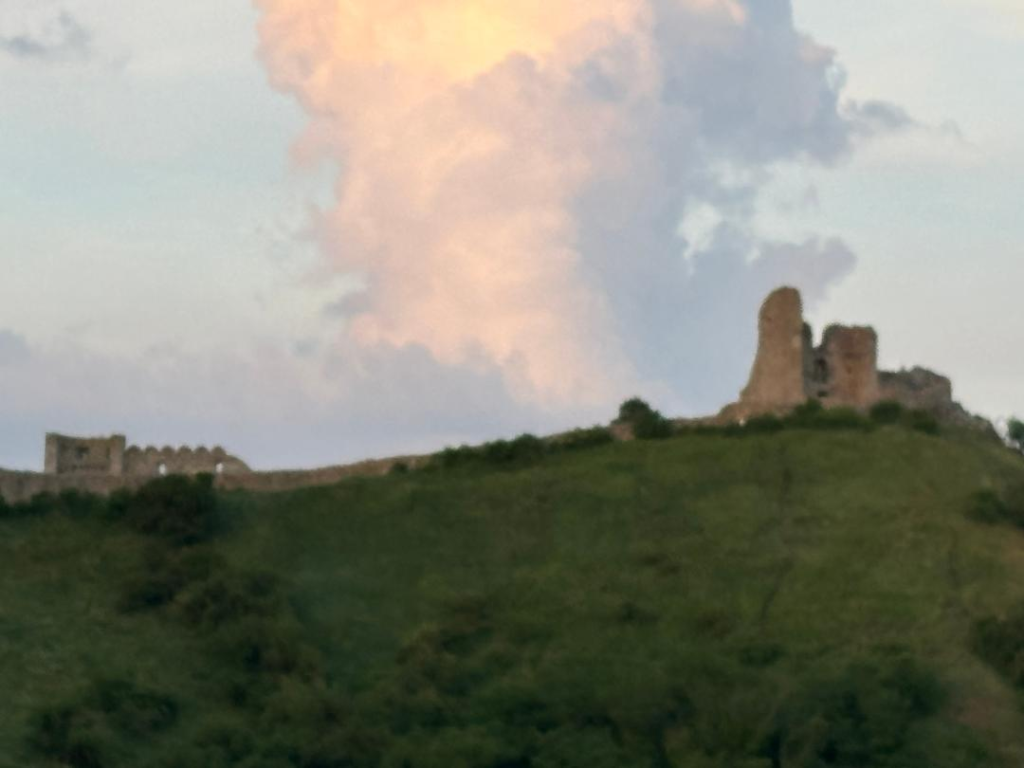
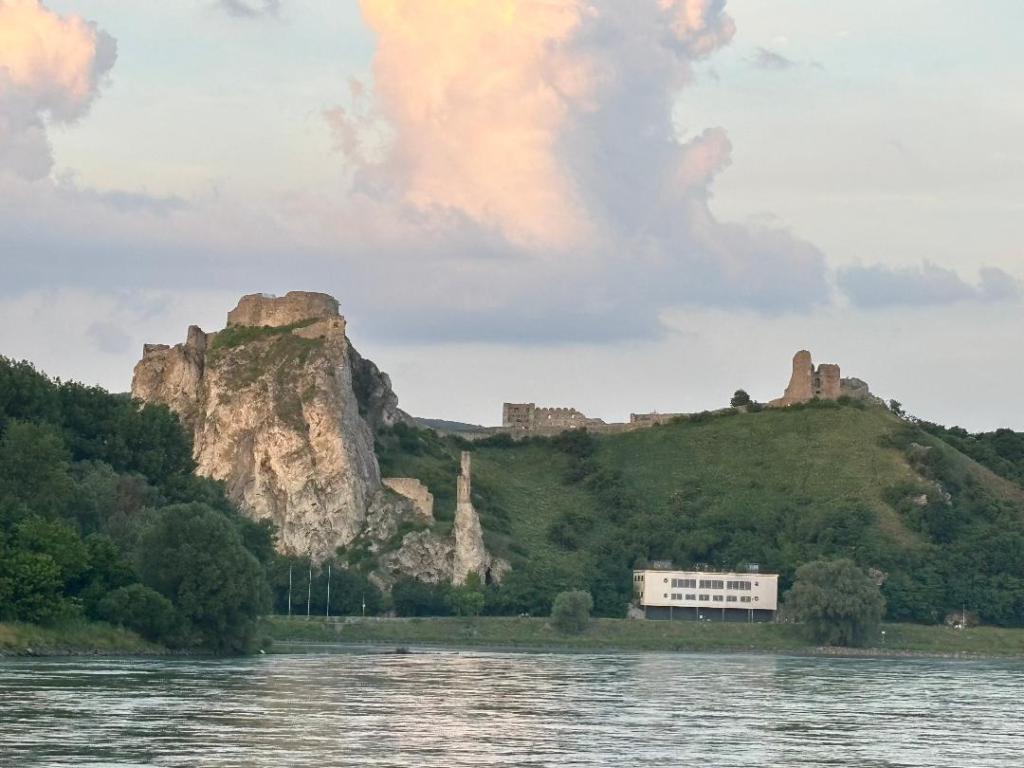
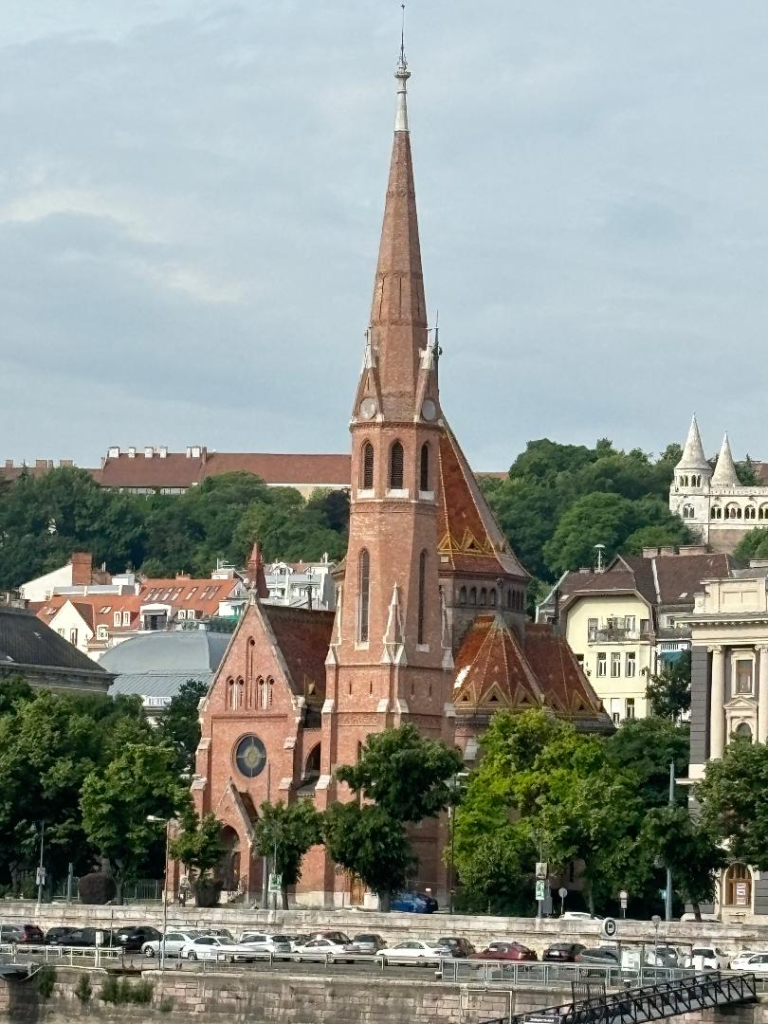


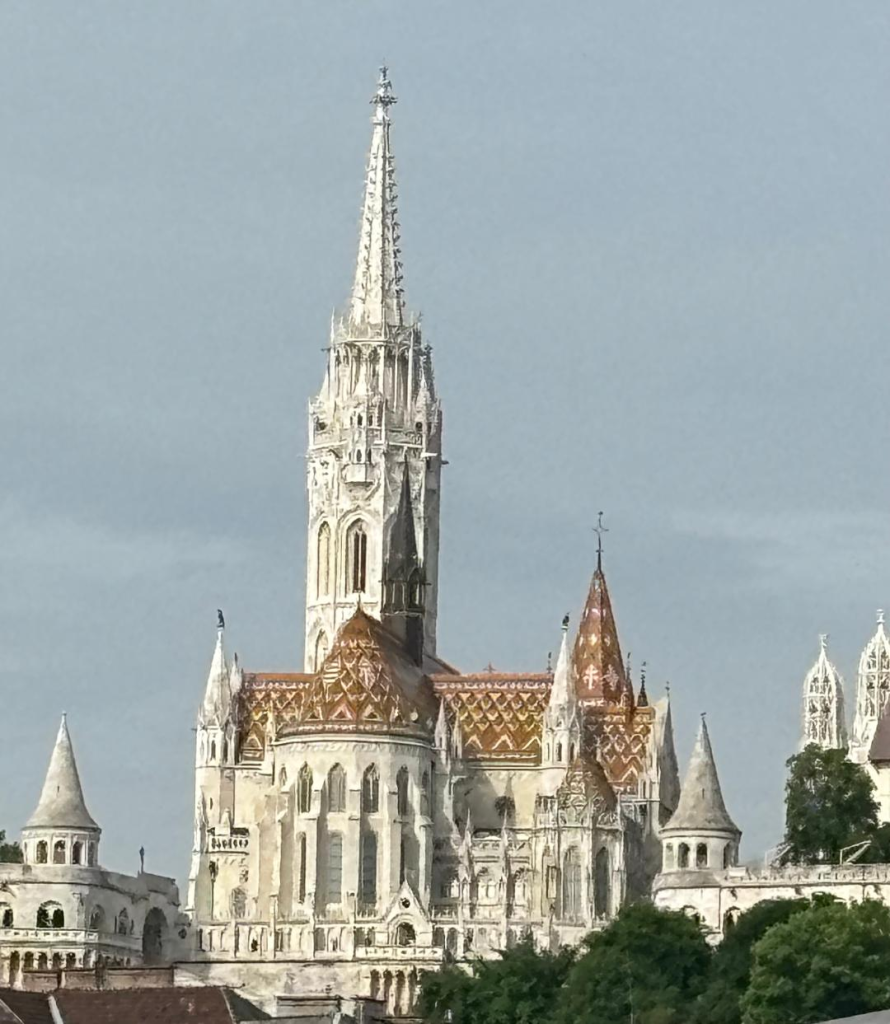
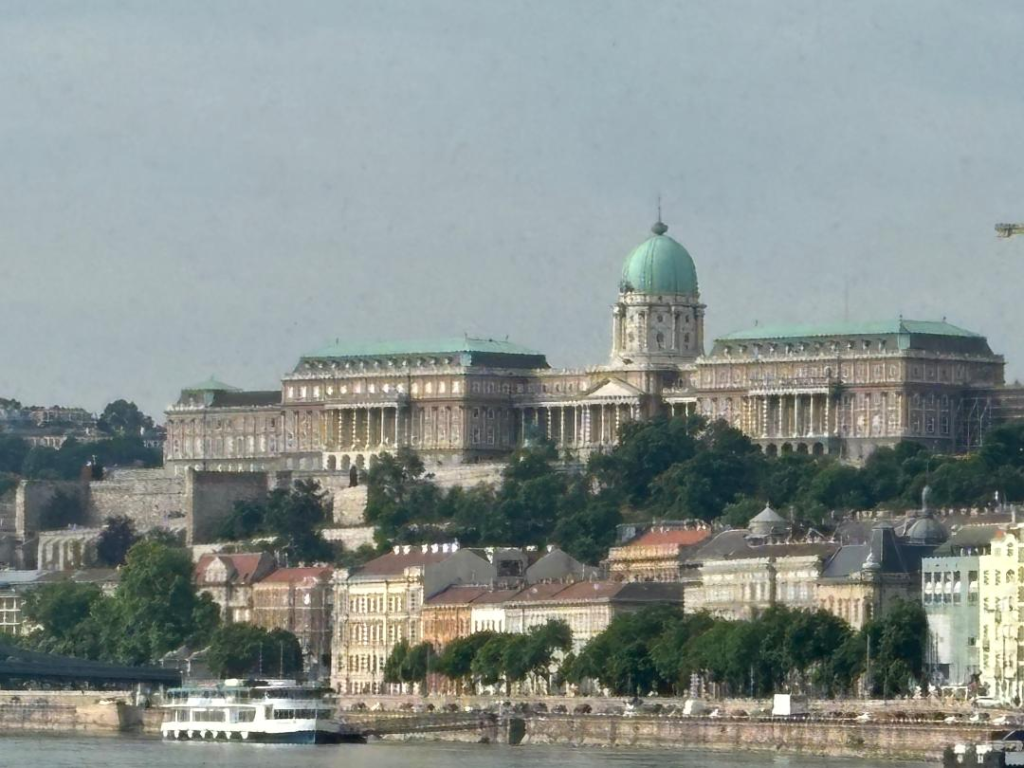
The country of Hungary is nearly the same size of our state of Indiana, but with about 3.2 million more people. History buffs may recall that it was not always so small. There seems to be some disagreement on what exactly caused WWI (some suggest Serbia initiated it by assassinating the sovereign of Hungary in a quest for independence); what we know for sure is that the 1920 Treaty of Trianon helped end it. This agreement between Hungary and the Allied Powers called for, among other things, the withdrawal of the Central Powers (of which Hungary was a member) from occupied lands and required Hungary to give up two-thirds of its territories. The treaty confirmed the idea of the right for self-determination and the concept of nation states replacing old, multi-national empires, which is what Serbia was looking for.
Budapest is Hungary’s capital and largest city. It is the combination of what were once two separate cities, Buda and Pest, officially united into one in 1873. Funny thing, no one seems to have told those who live here. They still refer to themselves as two separate entities, and joke about which one is better. Between the two of them they boast the world’s second largest synagogue, its largest geothermal cave system (with eighty geothermal springs), and the third largest parliament building. We visited two of these three treasures.
Construction on the Hungarian Parliament building began in 1896 to commemorate the 1,000th anniversary of Hungary becoming a state. With 691 rooms ten courtyards, and twelve-and-a-half miles of stairs it is Hungary’s largest building, the tallest in Budapest and the third largest parliament building in the world. It is modeled after Westminster Abbey and was intended to demonstrate Hungary’s commitment to Western Europe. Little did they know that just ten short years later that commitment would be severely tested by the events of WWI.
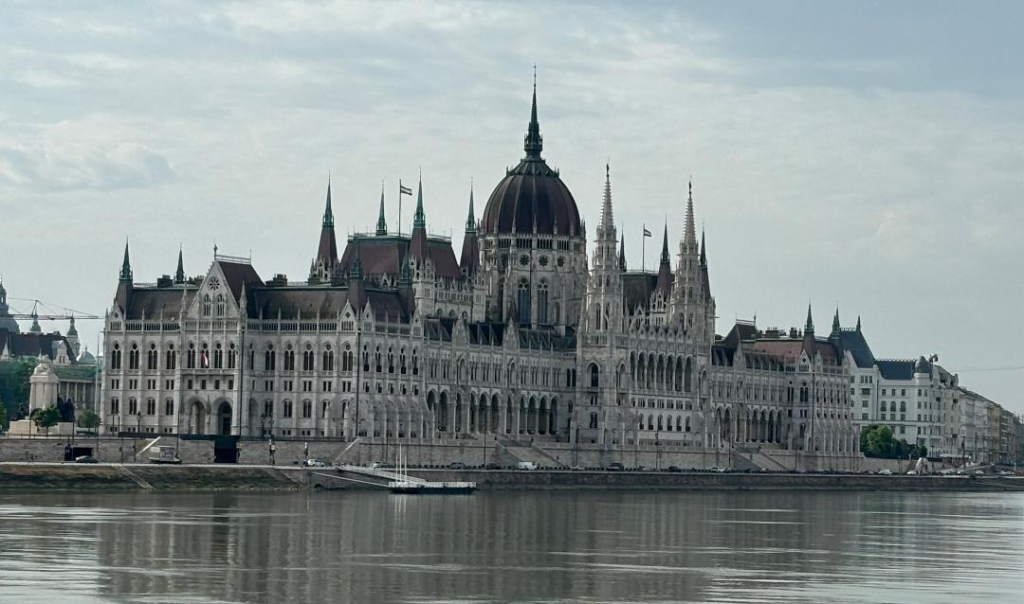
The Dohany Street Synagogue, located on the Buda side of the city, was built by the Jewish people of the city between 1854-1859. It is the largest synagogue in Europe and one of the largest working synagogues in the world. It is also the only synagogue to have a pipe organ (Pam could not find an explanation of why it has one; our guide told us that for a time the synagogue had been converted into a Catholic church. Pam couldn’t find anything on the web to support this claim, but if true that could explain the organ) and a cemetery. The Torah requires cemeteries be built outside city limits, but the events of WWII interfered with the ability of the Jewish community to do so.
The synagogue was bombed by a pro-Nazi part in 1939 and used as a German radio base and horse stable in WWII. It was located within the boundaries of the Jewish Ghetto in 1944-45, when more than 2,000 Jews died from cold and starvation. The Jews could not leave the city to bury their dead. This necessitated the creation of a cemetery at the synagogue.

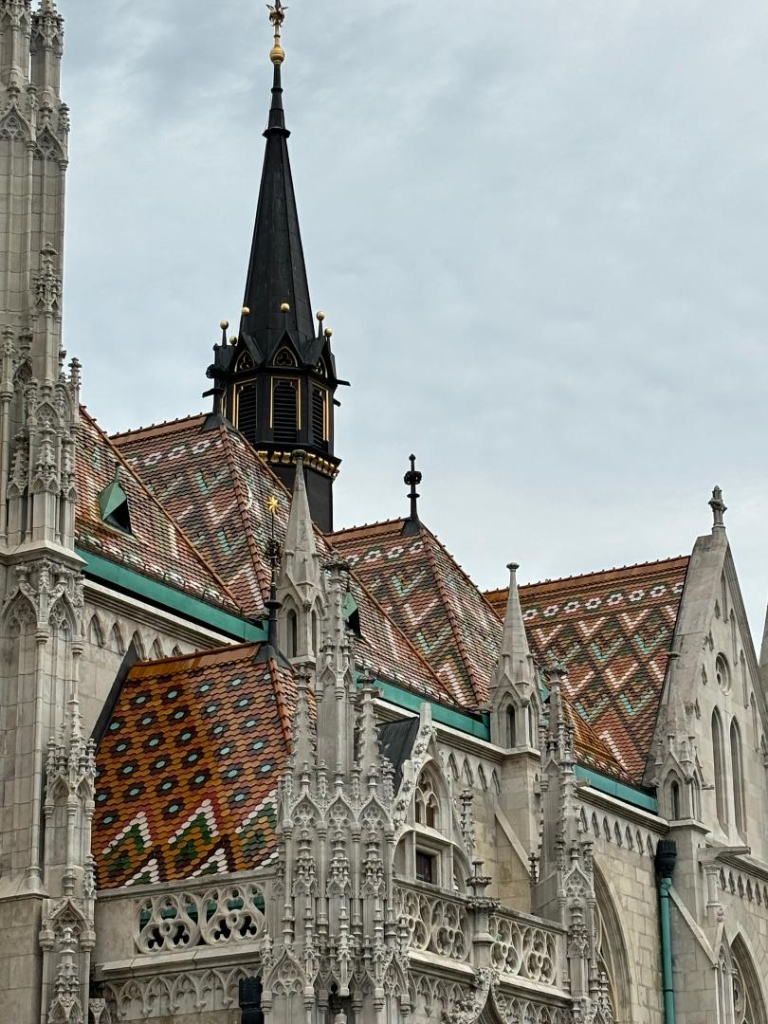
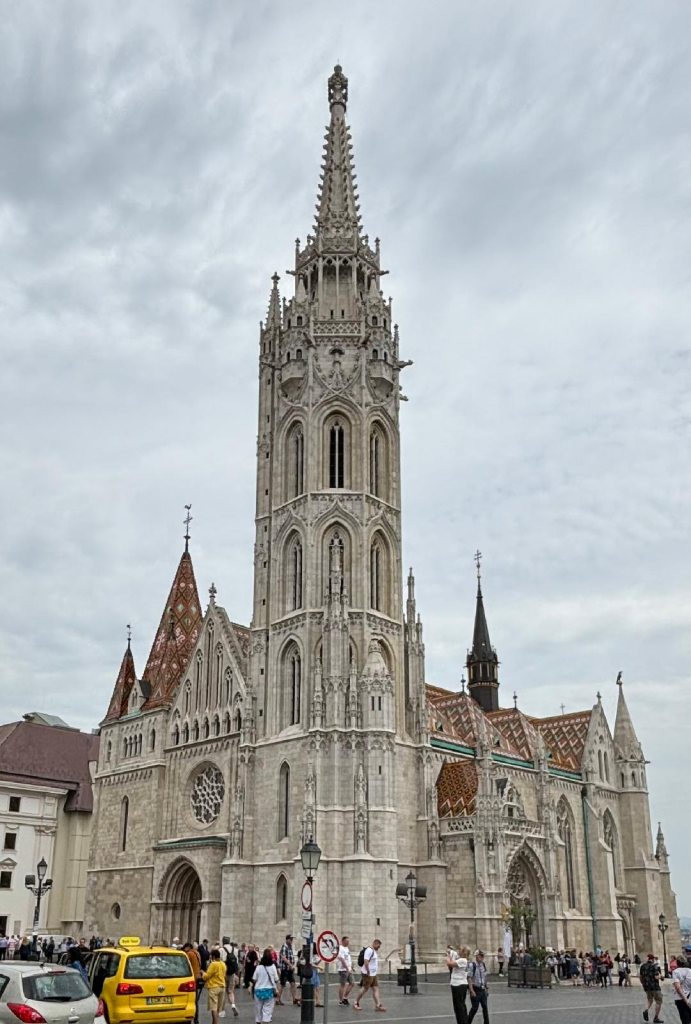
The entry is made of sandstone.
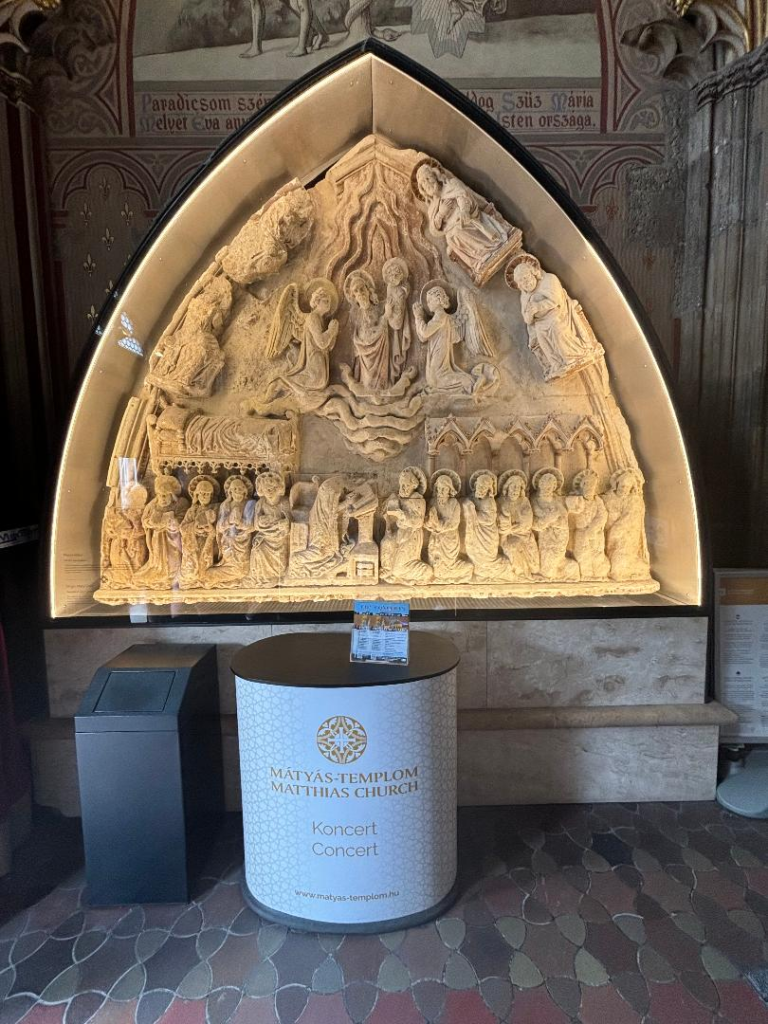
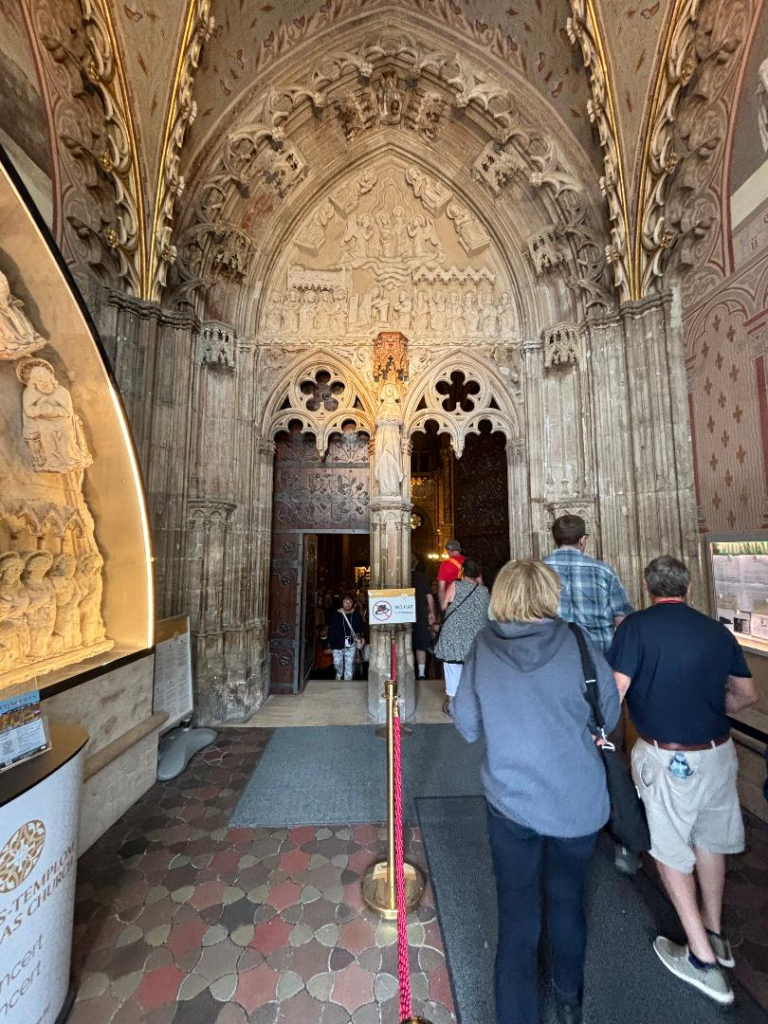
The main body of the synagogue takes your breath away.
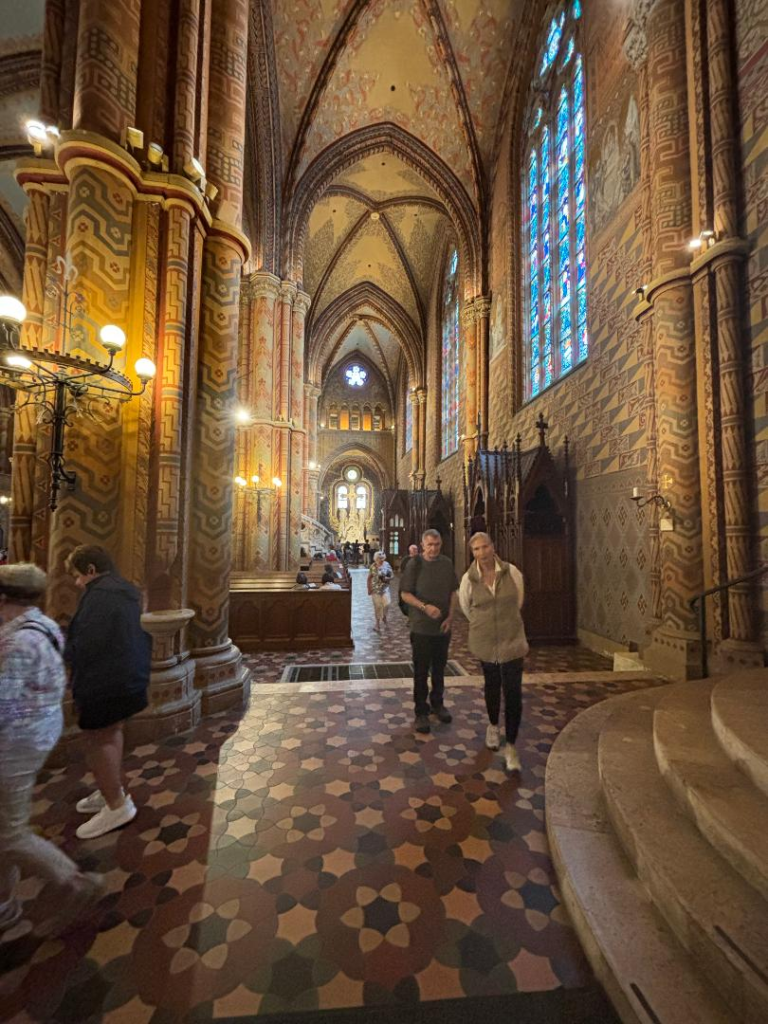
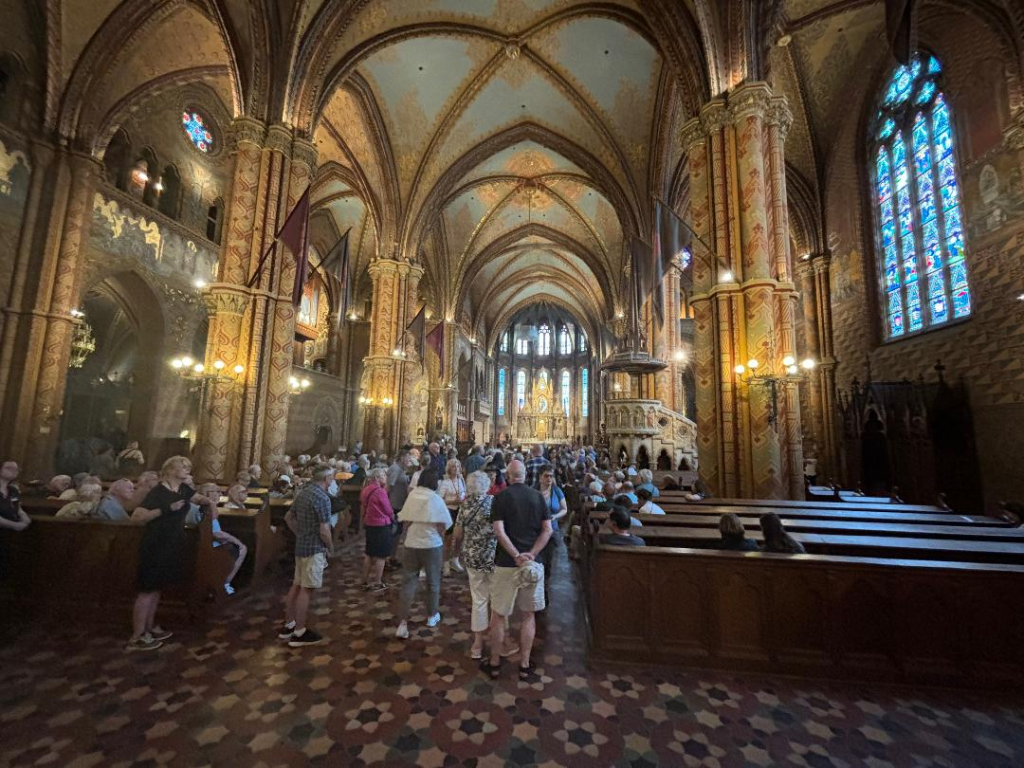
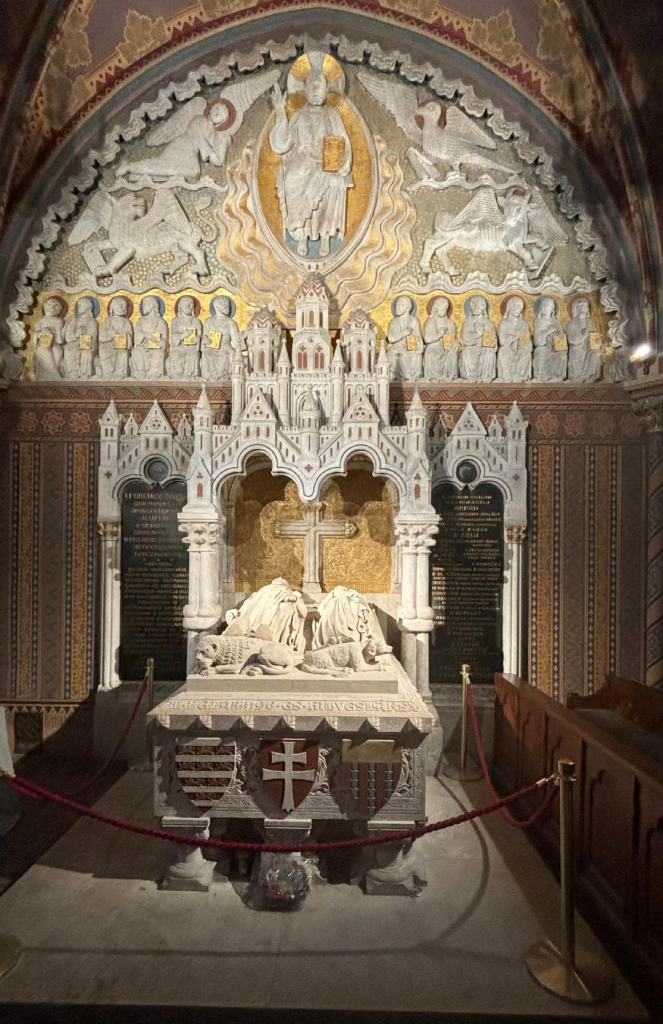



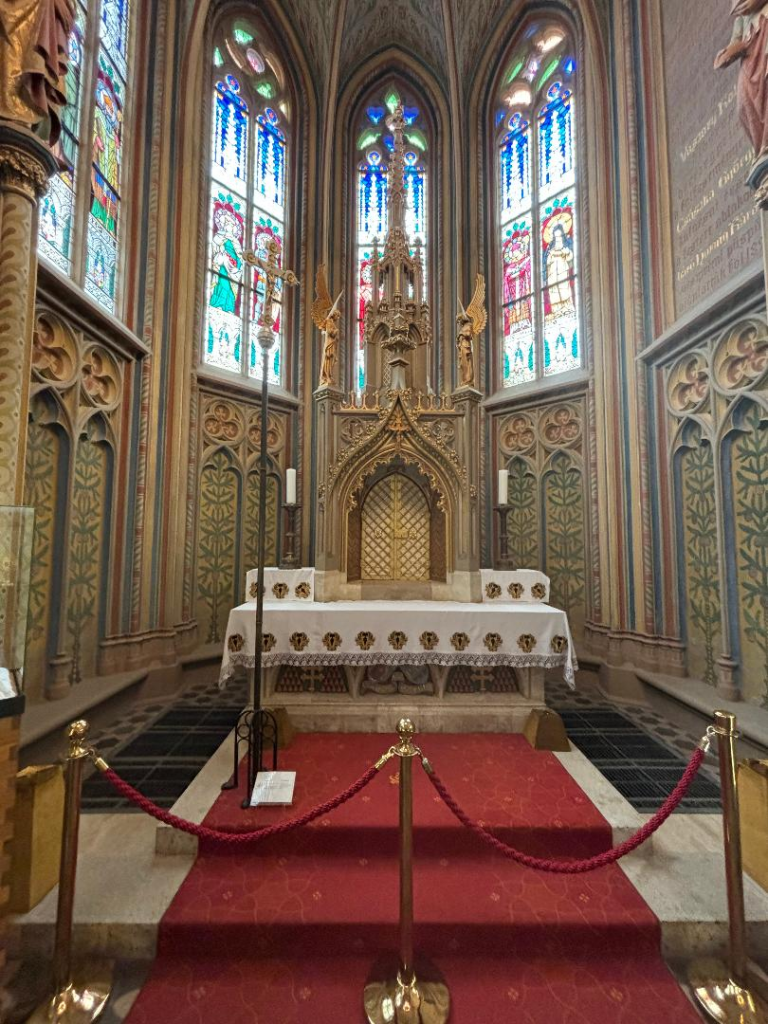
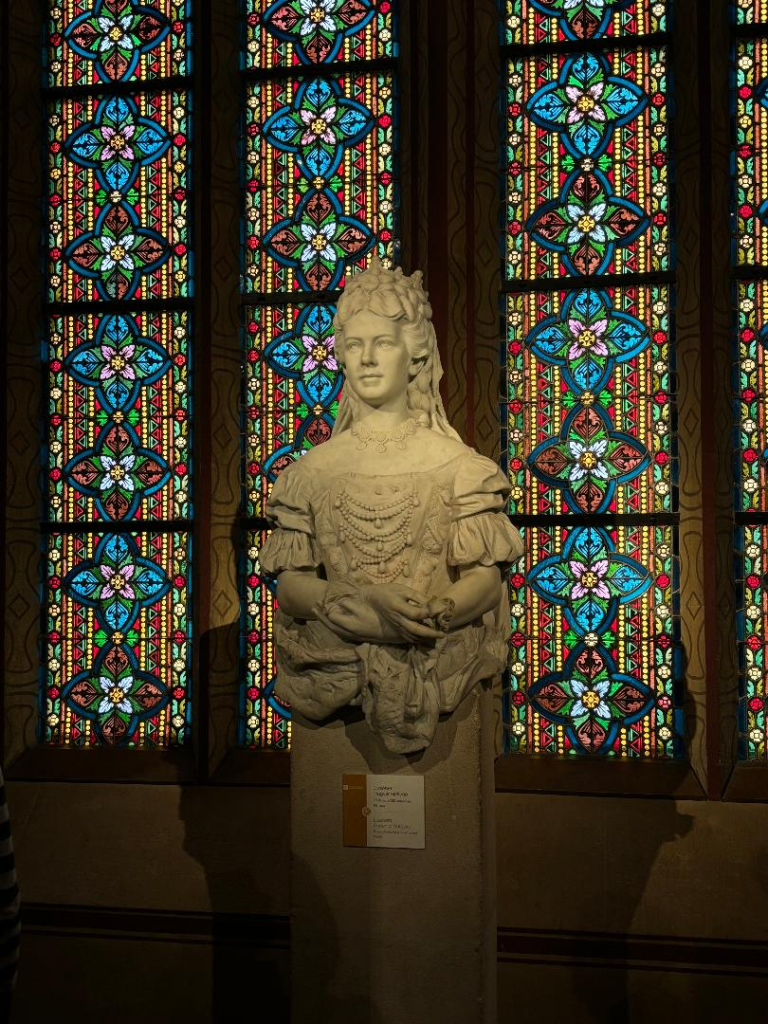

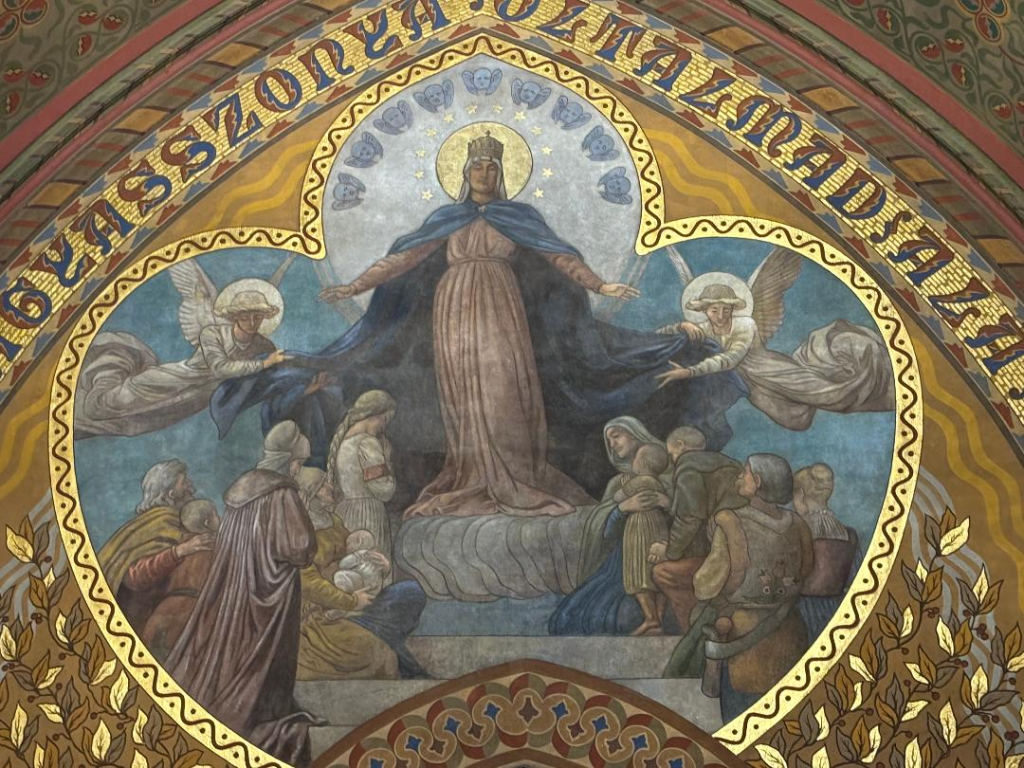
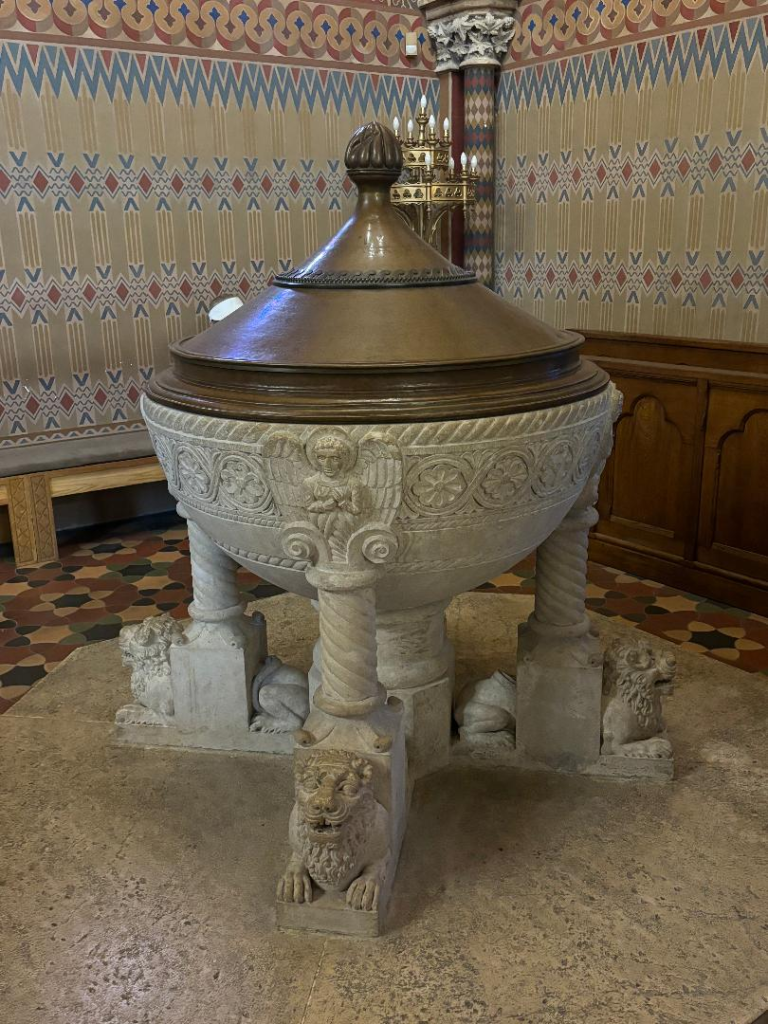
We climbed some back stairs for a different perspective.
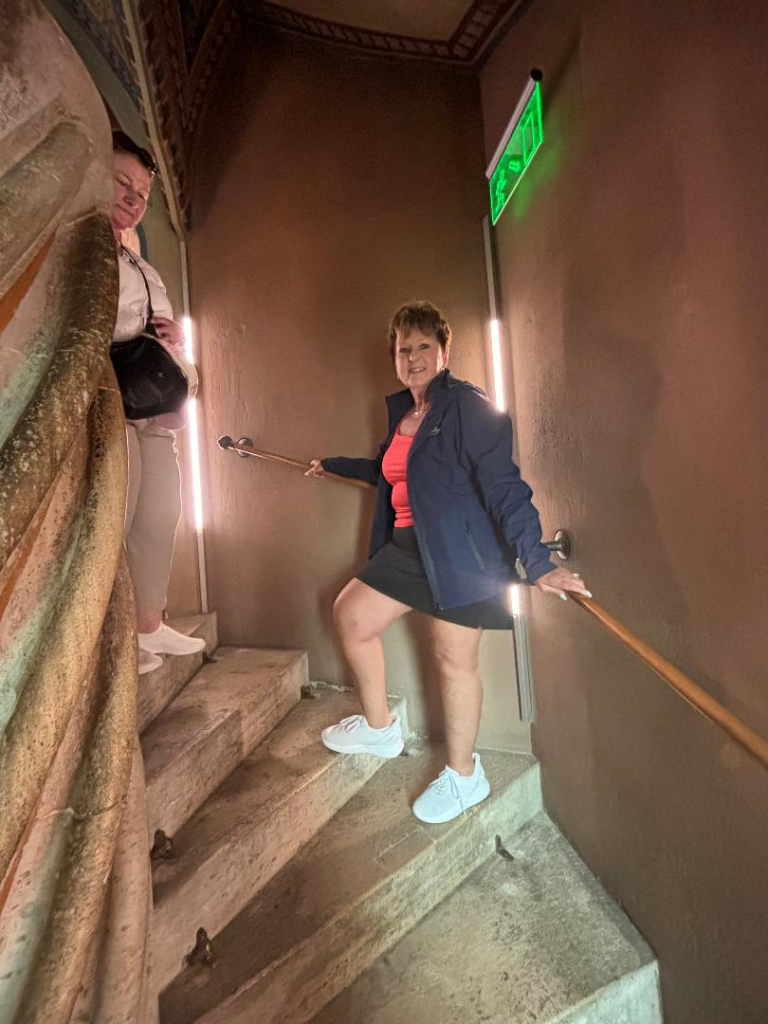
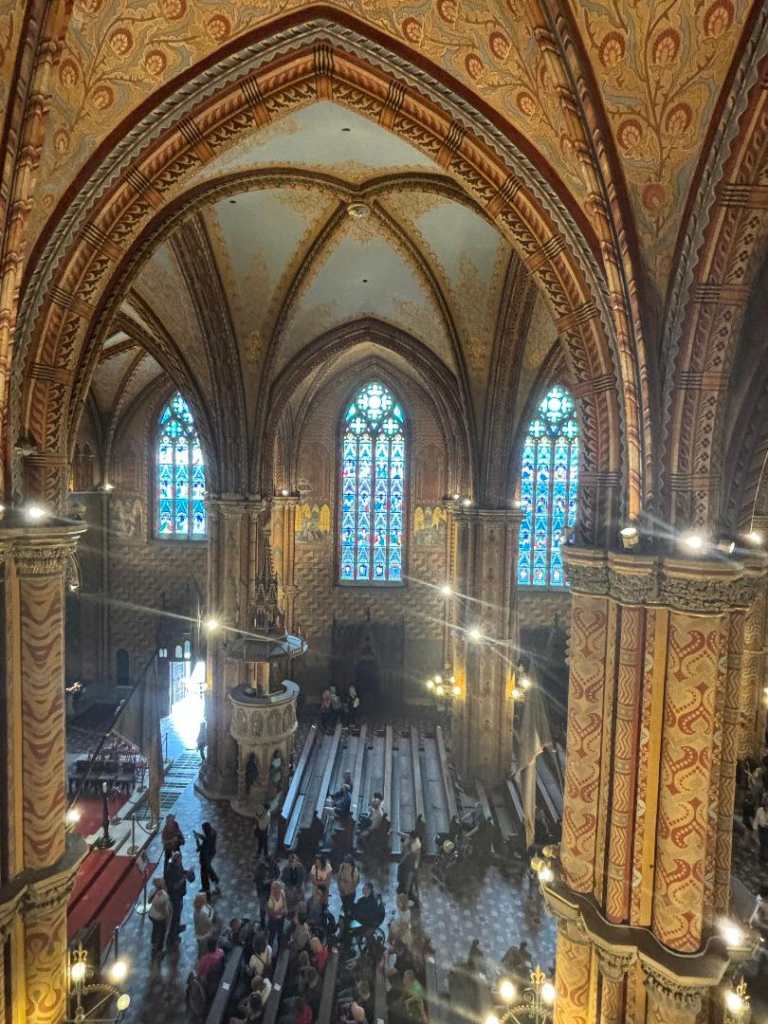
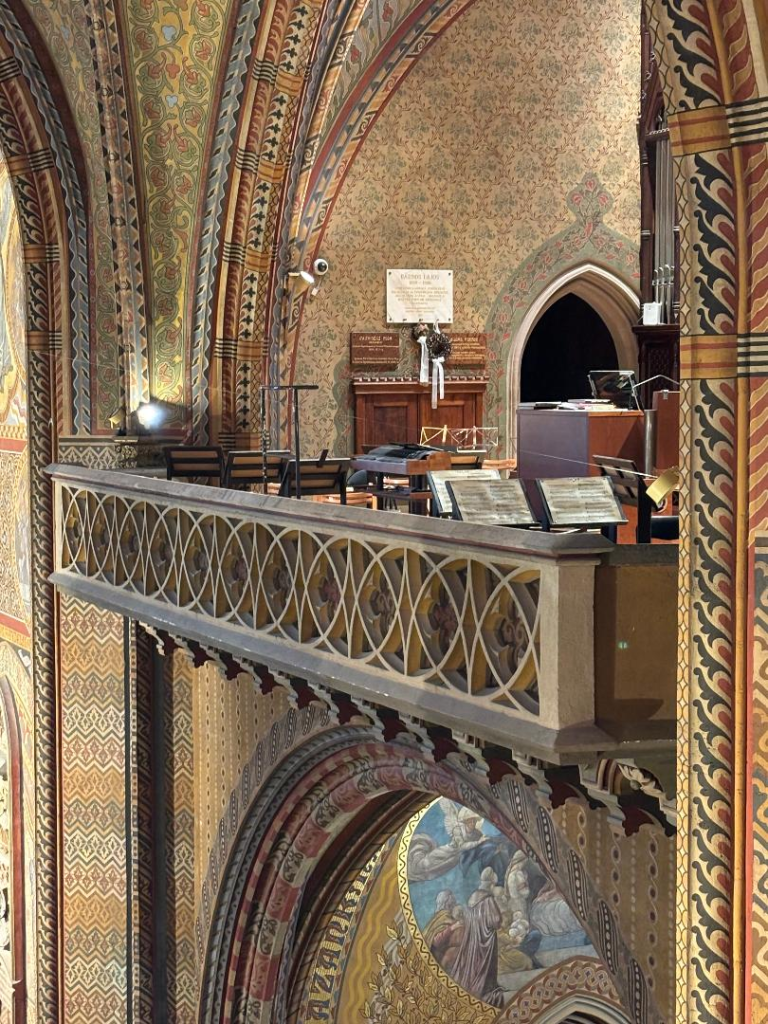
The synagogue stands the old City Council building. The area is surrounded by a magnificent wall best viewed from below.
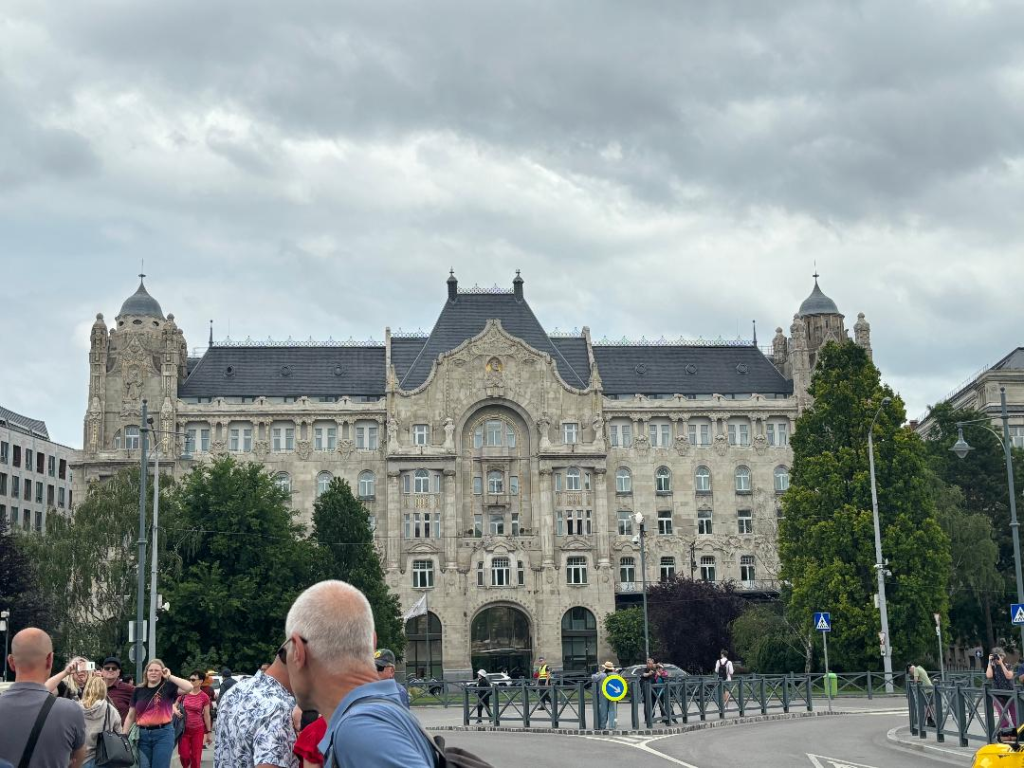
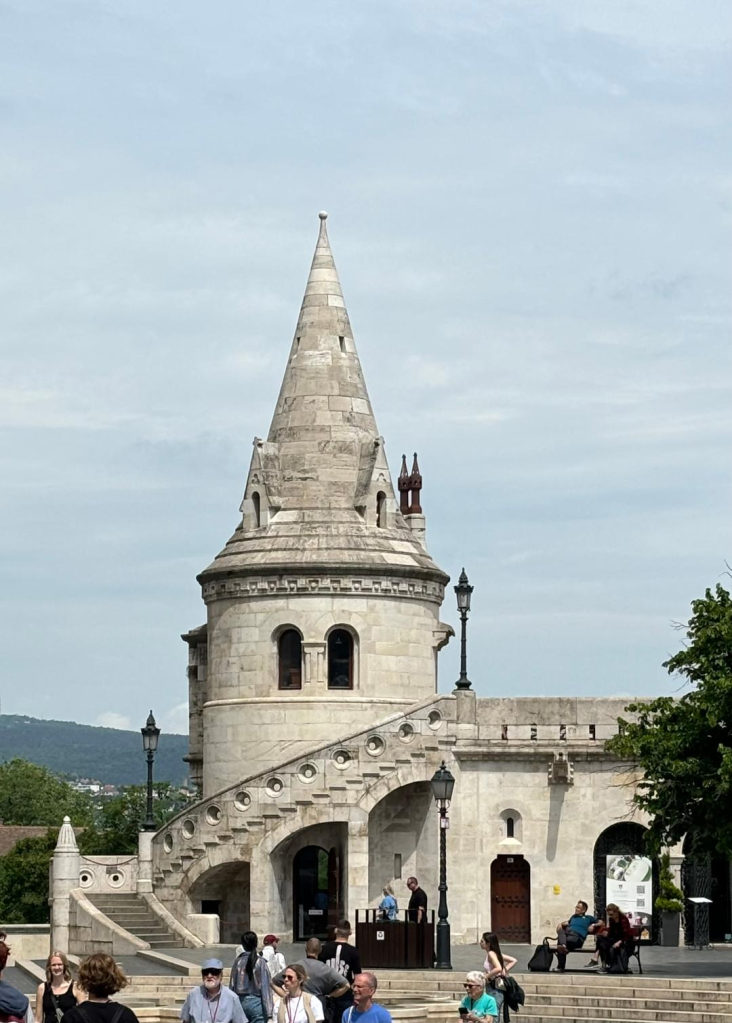

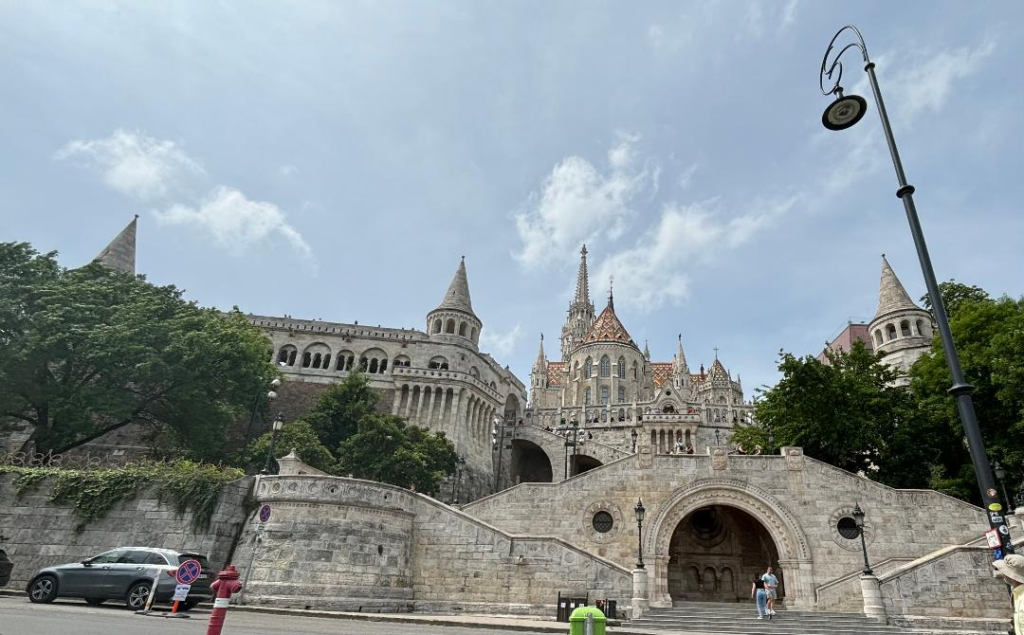
We rode on the bus on the way up to the church but opted to walk down. It was a great walk. We crossed back over the bridge where our ship is parked (you’d expect it to be called the Lion’s bridge, but it’s actually called the Chain Link Bridge because when it’s lit up at night it looks like chain links), and were able to see all three of the bridges of Budapest we’d passed under during our arrival.
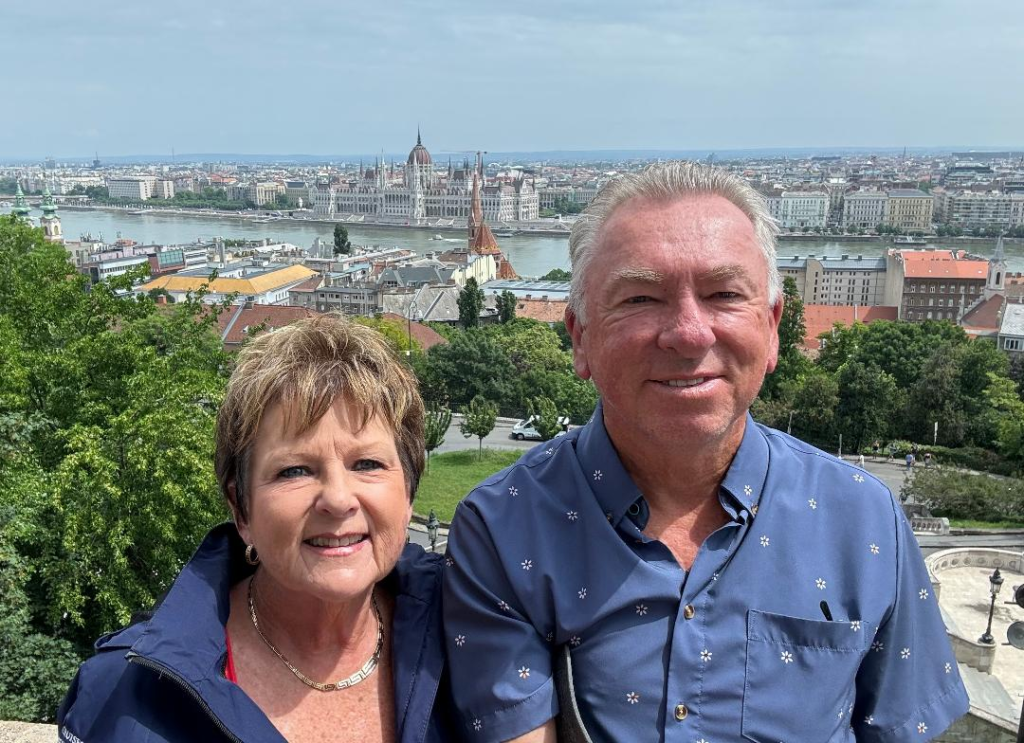
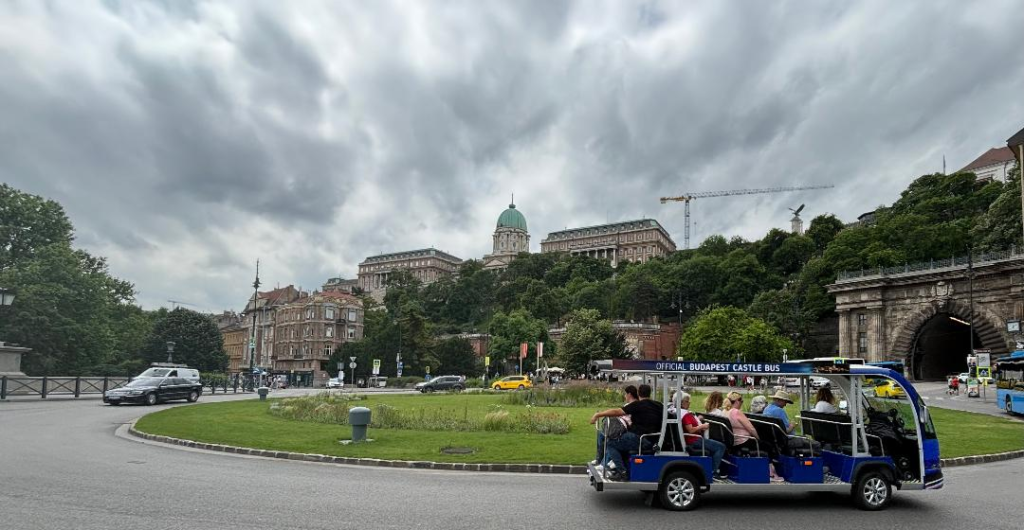

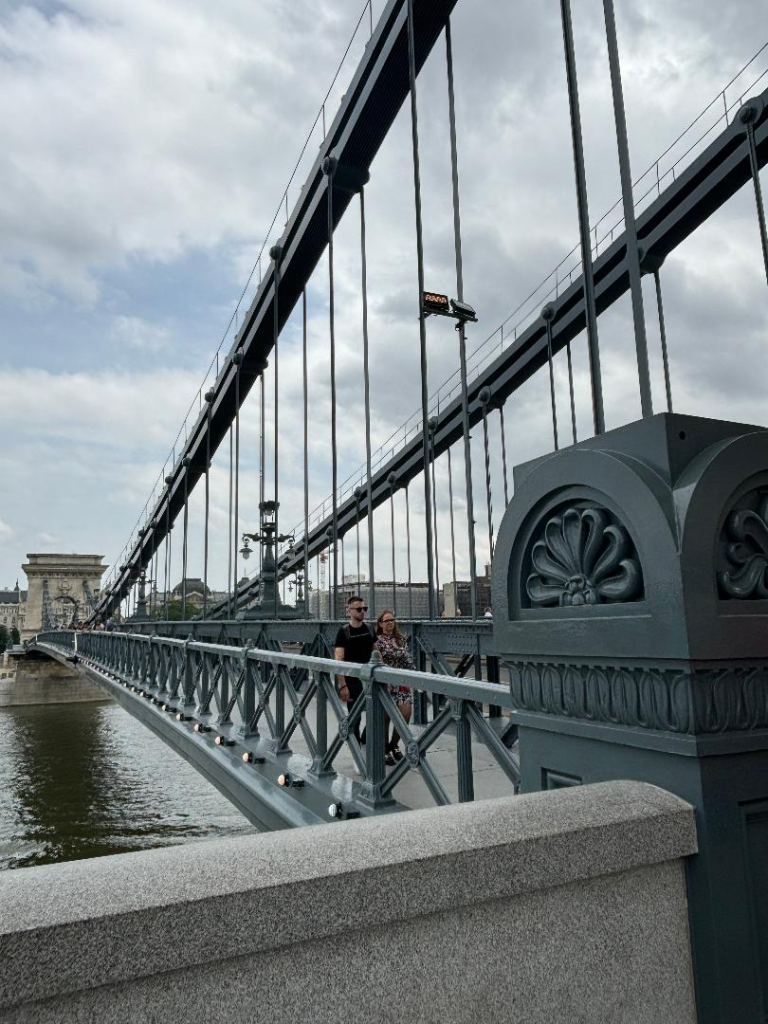
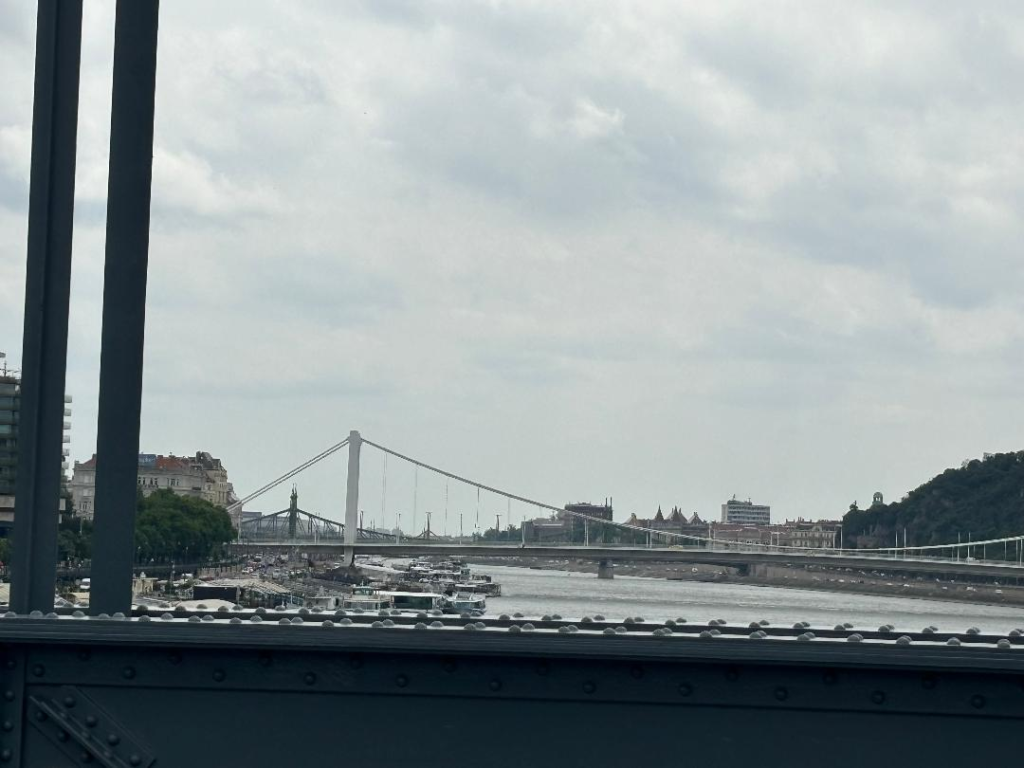
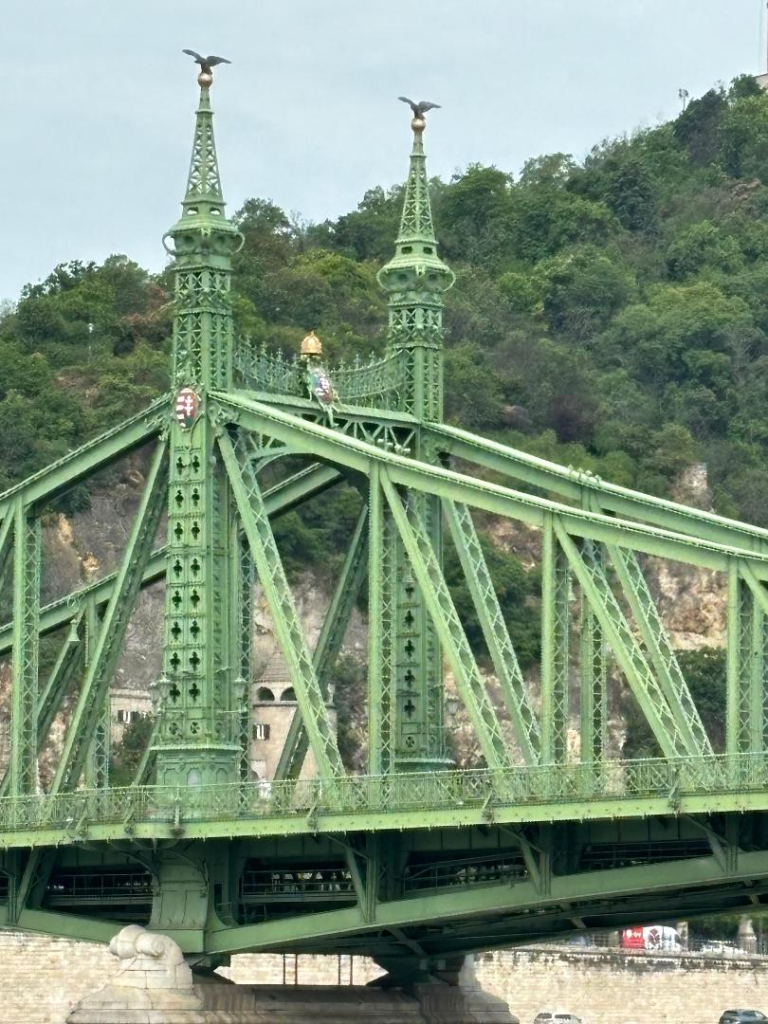
Before going to the synagogue we did a city tour that took us past Heroes’ Square, where we could see Matthias Church and the Millenium Monument.


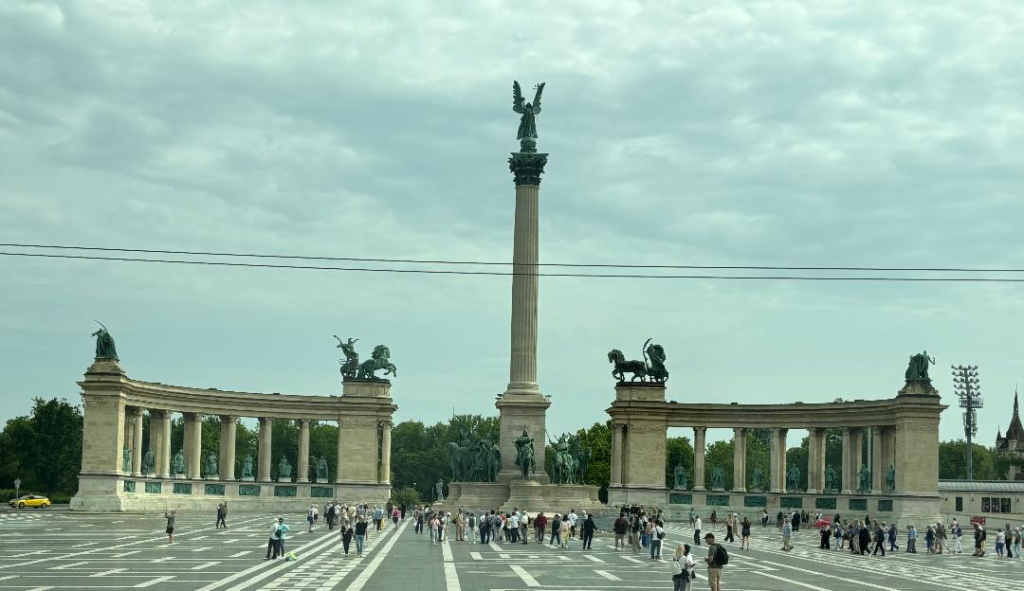

We also drove past the House of Terror. Previously home to the Hungarian Secret Service, it is now a museum of and memorial to the fascist and communist regimes that once controlled the city and those who were detained, interrogated, tortured, or killed within the building. Outside is a piece of the Berlin Wall and an iron chain wall representing the Iron Curtain.
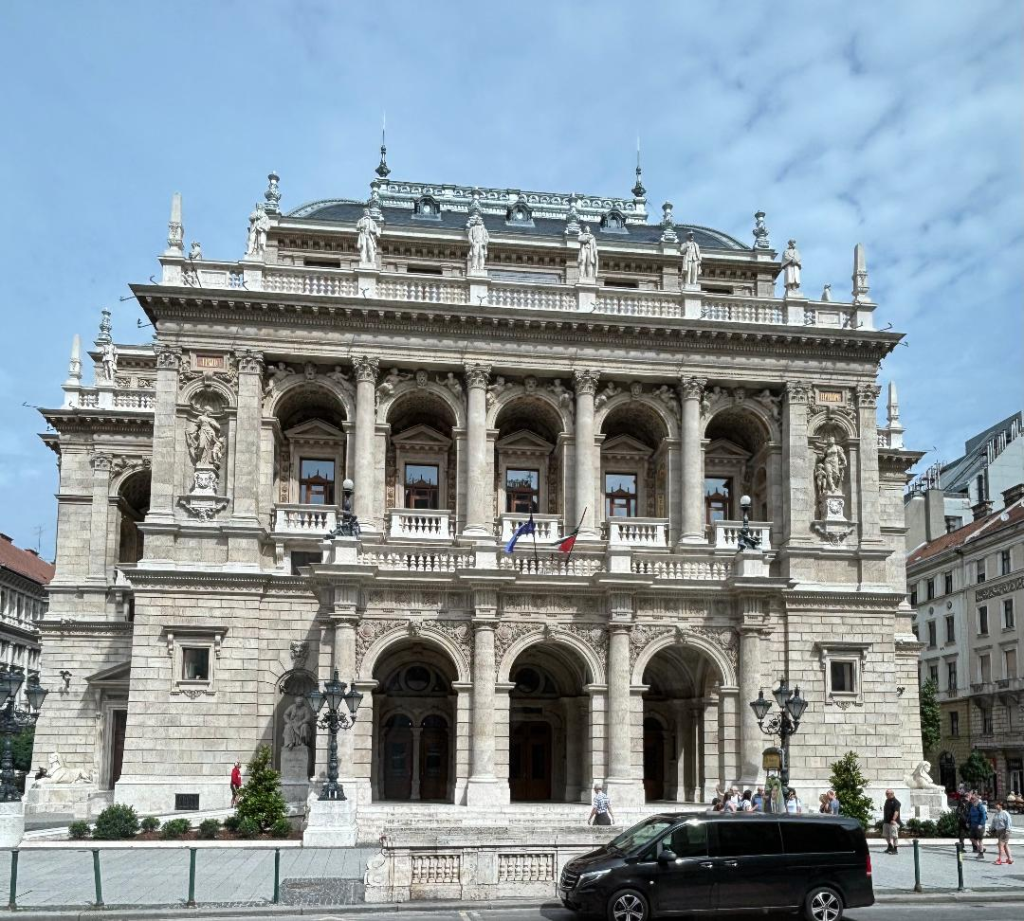
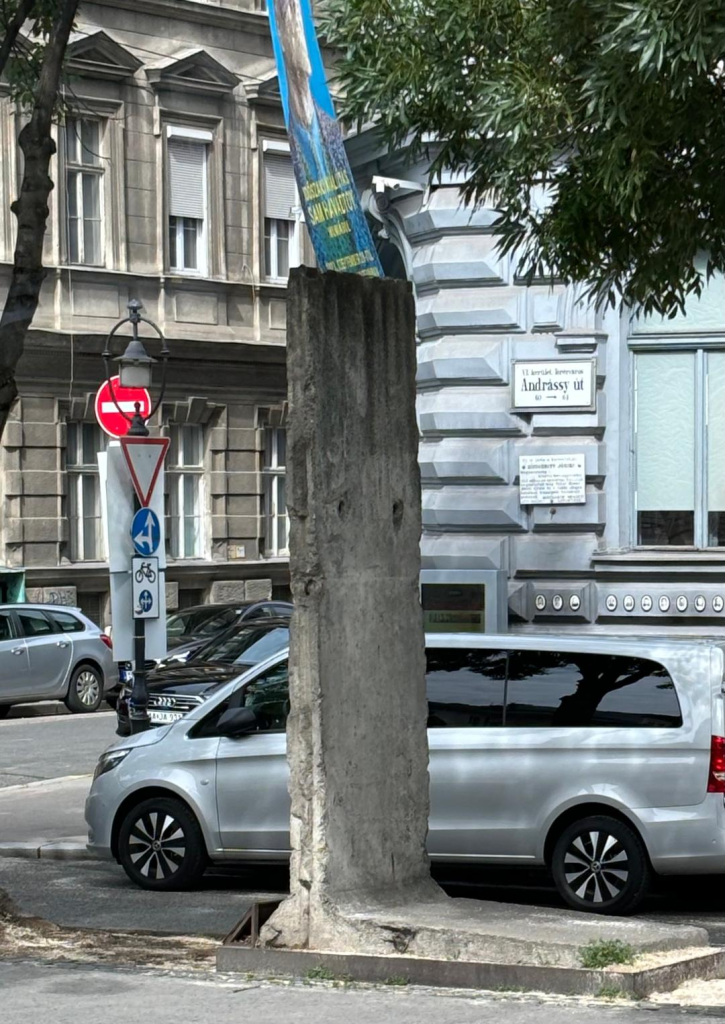
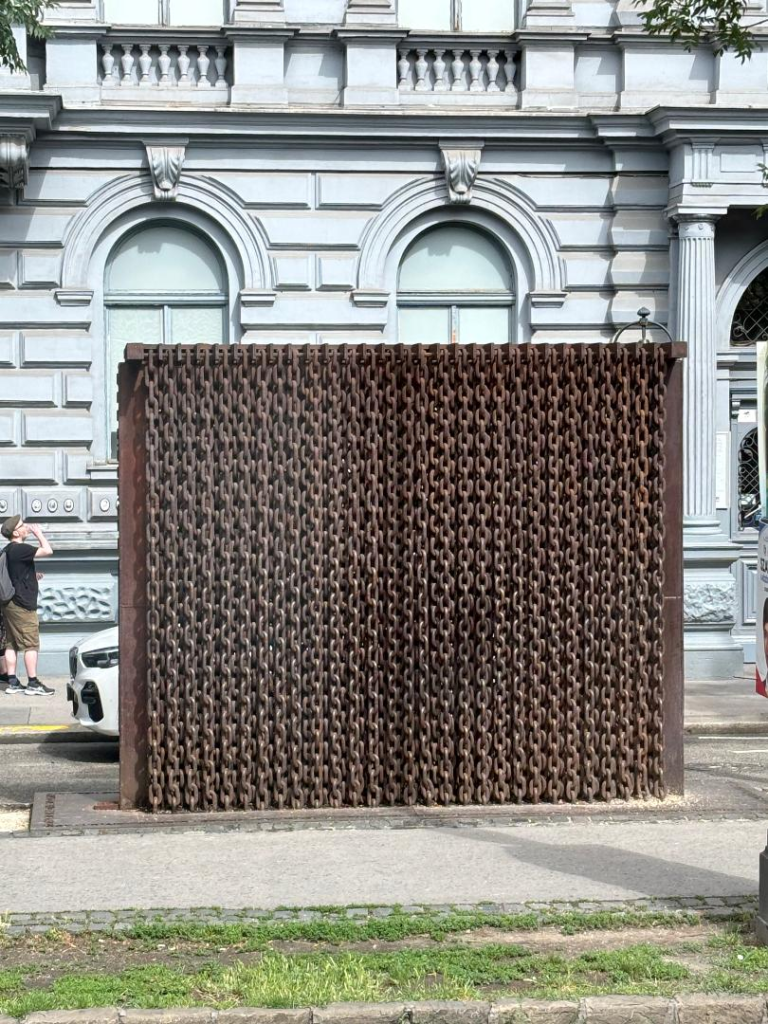
There are many memorial statues in and around Budapest – too many to mention. Here’s a sampling. The first looks like an eagle, but is actually a Turul, a mythological bird of prey representing a protector spirit. It was the clan symbol of the ruling dynasty in the 9th and 10th centuries and is now the national symbol of Hungary.
The second picture is St. Ivan, a hermit who lived in the caves of Budapest who is thought to have given healing powers to the area’s thermal springs.
Last, but not least, is Lady Liberty, commemorating those who sacrificed their lives for the independence, freedom, and prosperity of Hungary.
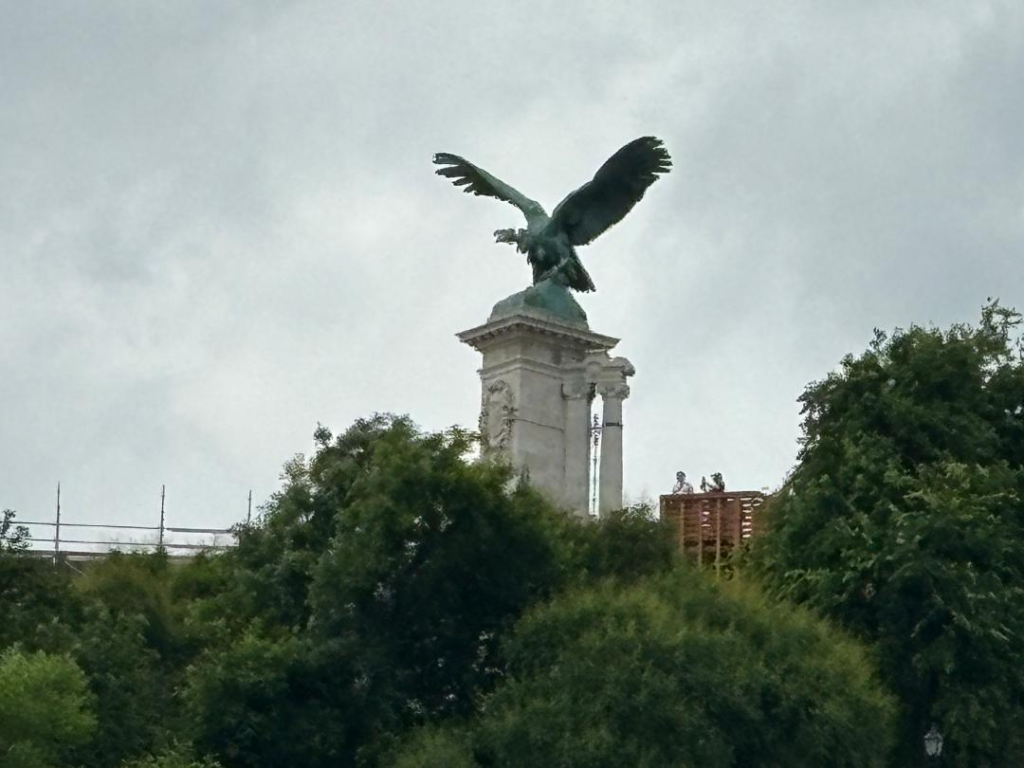
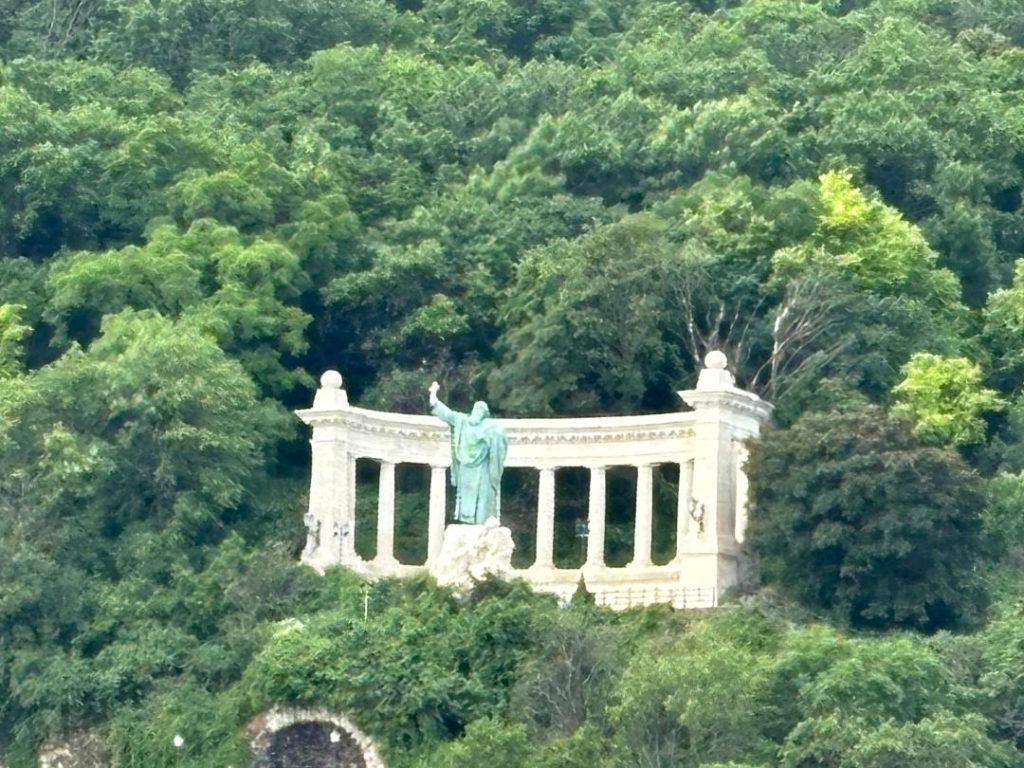

We had dinner at a wonderful traditional Budapest fish restaurant on the water. It was so good! We had a beautiful view of the Hungarian National Art Gallery.
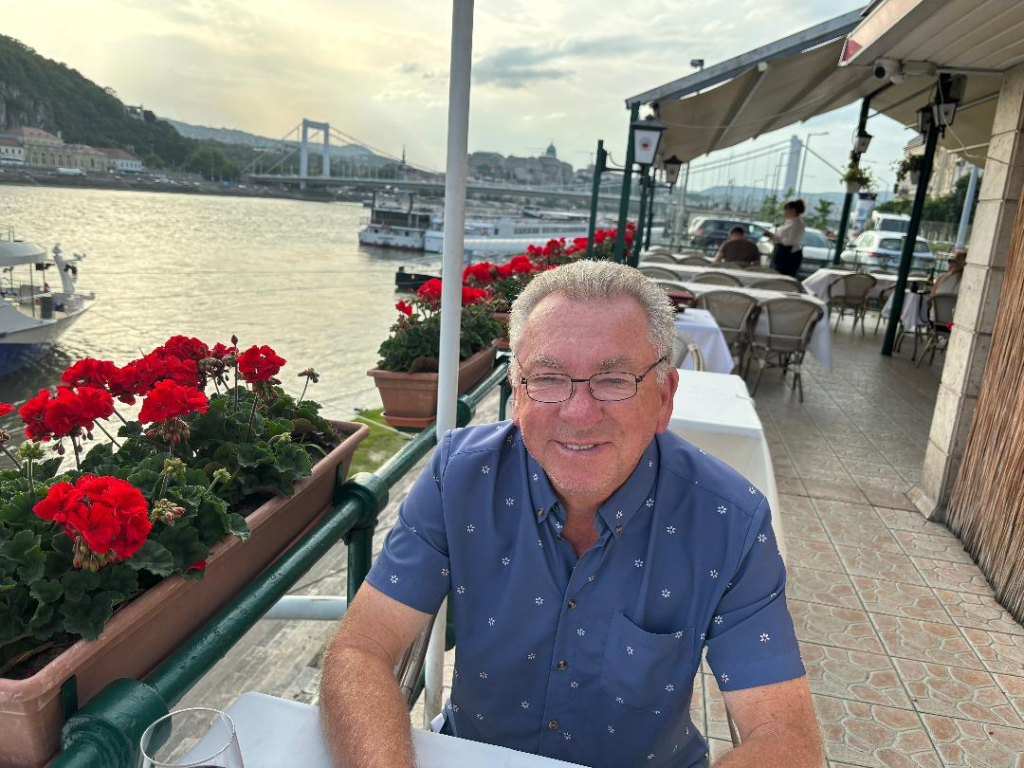


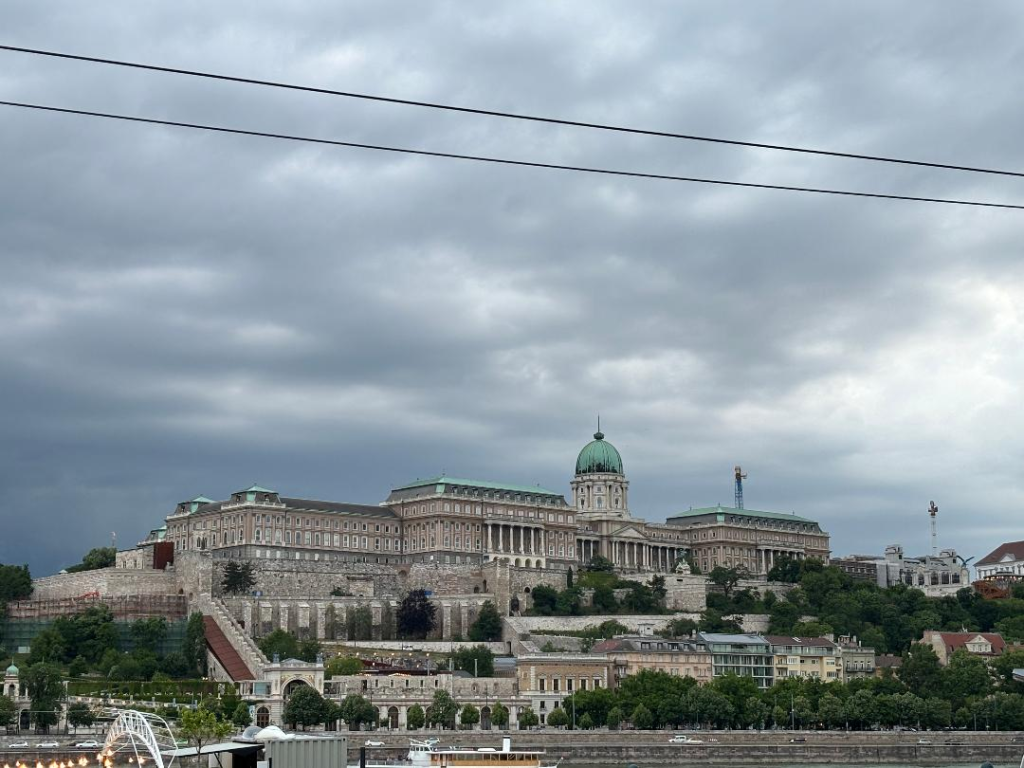
We were supposed to go on a tour of Budapest at night, but as you can see from the picture of the gallery there was a storm rolling in. Instead we got back to the ship just in time and were treated to a great thunderstorm, completing with a little bit of rolling thunder and lightning strikes across the water!
